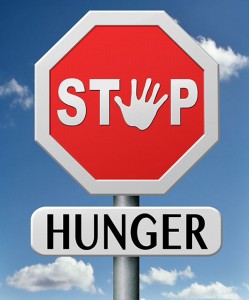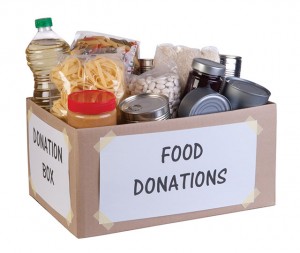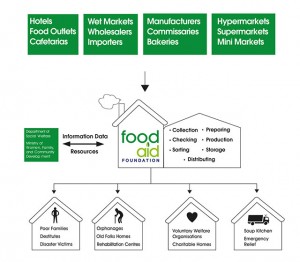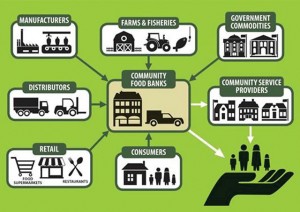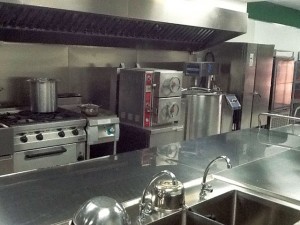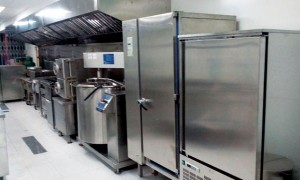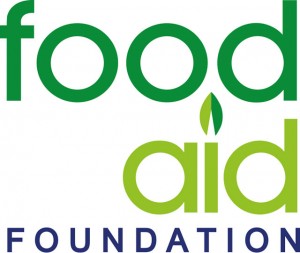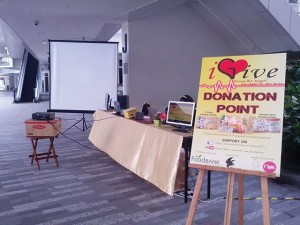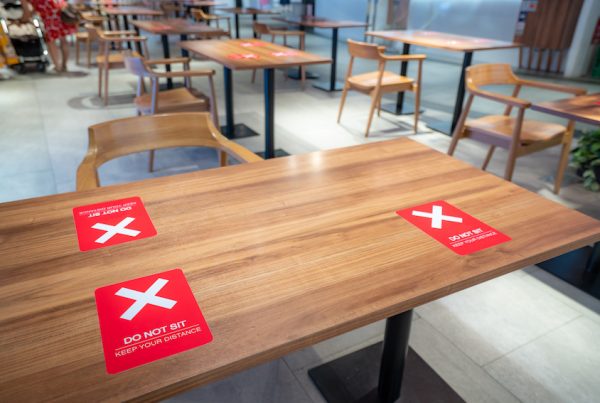Admittedly, food wastage is not just for restaurants to shoulder as there is only so much kitchens can do to control its waste volume but if we look at the entire food chain, waste does start early; right from the production level. A certain percentage of produce will not leave the farm because they do not meet standards or are either grown to hedge against disease or weather.1 At the packing station, produce gets culled further to meet minimum standards for size, colour and weight.1 If produce are channeled for process, they are trimmed even more at the manufacturing factory.
In recent years, our standard of living has improved, which increased demand and supply. More supermarkets are opening to cater to the convenience of the surrounding neighbourhoods and it is always crucial for it to supply more
than demand as there is no clear indication on consumers ‘daily buying habits’. Food importers are also bringing in a
greater diversity of items from around the world to meet the demands; whether from the industry or domestic as food appreciation continues to grow. At the same time, it is also becoming easy to toss food in our households; due to the abundant supply and relatively affordable purchase price.1
Yet, with that much of excess food, many communities still live in the face of poverty. It is not a new problem, it dawned upon a Jon van Hengel way back in 1960s when he met a mother whose family eats from soup kitchens and grocery store dumpsters and started the world’s first food bank in 1967. With St. Mary’s Basilica providing him a building to store excess food and monetary donations, the St. Mary’s Food Bank paved the way for many food banks to open in America.2 As the concept caught on, more food banks began operating in other continents and in Southeast Asia, we met the individuals behind Food Aid Foundation (Malaysia) and The Food Bank Singapore to find out how they run.
FOOD AID FOUNDATION (FAF)
Having had almost 30 years in the foodservice industry, Rick Chee had come to also see how much good food goes to waste. FAF estimates that 15,000 tonnes of food and kitchen waste are thrown out daily3 with 10% – 15% comprising unconsumed and expired food. He started the Foundation with the primary objective of providing basic food to charitable homes, rehabilitation centres, feeding centres, poor families and the destitutes.
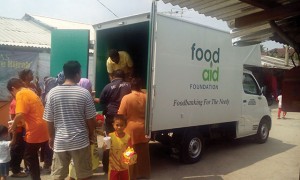
HOW EXCESS FOOD IS CHANNELLED
In distributing food, it is important to get the supplies to the right places and this is further made possible with Food Aid’s complete kitchen facility with cold rooms to keep uncooked raw food in optimum condition. It would not make sense to bring uncooked produce to the homeless who have no avenue to cook but welfare homes are able to accept cooked-chill or vacuum-packed items and utilise them accordingly. One of the bigger challenges in Food Aid’s endeavour would probably be logistic managements in food collection and there must be an agreed schedule between contributor and FAF on food pick-up. Rick tells us that no amount is too little but at times regular pick-up is not viable and in such cases, FAF would consider placing a chiller in said establishment for it to keep items fresh for intermittent collection periods.
 For Rick, it is not only about dropping excess food into the hands of the needy but to add value to what he was given. This is why he has assembled a team of chefs to create menus and new interesting products from the contributions FAF garnered. It also collaborates with its mission partners and to date has reached out to more than 30 welfare organisations, making those visits a special one for the residents through fun, games, engaging with their interests and simply spending time to listen to them. By relieving these homes its food cost, even if it is a fraction, the Foundation hopes that homes would be able to afford more comfortable amenities for its residents. In a sense, food is the driver to bridge a gap in our community and Rick also hopes that in the long run, Food Aid Foundation is able to offer work and help people get out of poverty or for some to get back on their feet again.
For Rick, it is not only about dropping excess food into the hands of the needy but to add value to what he was given. This is why he has assembled a team of chefs to create menus and new interesting products from the contributions FAF garnered. It also collaborates with its mission partners and to date has reached out to more than 30 welfare organisations, making those visits a special one for the residents through fun, games, engaging with their interests and simply spending time to listen to them. By relieving these homes its food cost, even if it is a fraction, the Foundation hopes that homes would be able to afford more comfortable amenities for its residents. In a sense, food is the driver to bridge a gap in our community and Rick also hopes that in the long run, Food Aid Foundation is able to offer work and help people get out of poverty or for some to get back on their feet again.
9, Jalan 7/118B, Desa Tun Razak Industrial Estate,
Cheras, 56000 Kuala Lumpur
T: +603 9226 5500 F: 03 9226 5577
E: info@foodaidfoundation.org
www.foodaidfoundation.org
1 Plumer, B. (2012) How Restaurants Manage to Waste $165 billion in food
each year. http://www.washingtonpost.com/blogs/wonkblog wp/2012/08/
22/how-food-actually-gets-wasted-in-the-united-states/
2 http://www.firstfoodbank.org/learn-more/our-history
3 http://www.thestar.com.my/News/Nation/2013/06/05/Wasteful-ways-of-
Malaysian-gluttons-15000-tonnes-of-food-enough-to-feed-75-million-peoplethrown-
a/
 THE FOOD BANK SINGAPORE
THE FOOD BANK SINGAPORE
A 3rd generation of food entrepreneurs, Nichol’s family has been in the business of food imports for the past 80 years. Throughout her 11 years in the family business, she has seen how Singapore’s large variety and high quality food imports is controlled and handled. There is a practice of food dumping as a measure of quality control and due to lack of restriction , an estimated upon-incoming volume, SGD 300-400,000 worth of food are dumped every day in Singapore with reasons being close to expiry, error in packaging or labeling, unpopular or slow moving. The National Environment Agency reported that the country’s food waste amounted to 796,000 tonnes in 2013.
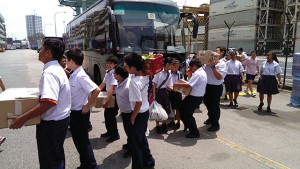 In January 2012, Nichol and her brother, Nicholas set up The Food Bank Singapore and with their experience and
In January 2012, Nichol and her brother, Nicholas set up The Food Bank Singapore and with their experience and
network within the distribution chain, they aim to develop a centralised coordinating organisation for all food donations and reduce food waste among the supply chain. Despite Singapore being the most developed nation in South East Asia, The Food Bank Singapore provides food to 130 member beneficiaries by creating awareness and developing the necessary facilities to take in the offerings by donors.
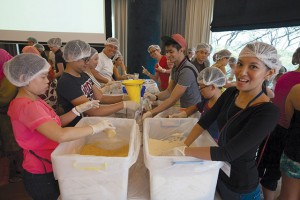 As they go forward, The Food Bank Singapore is looking at a 3-part long term plan, beginning with perishable food items which they hope to have a facility to prepare these items as soon as they come in to avoid spoilage. Part 2 involves canned and packaged food shelf life that would go through laboratory tests and certified according to The Food Bank Singapore’s own guidelines for safety; followed by expired items which will be converted to animal feeds or biofuel.
As they go forward, The Food Bank Singapore is looking at a 3-part long term plan, beginning with perishable food items which they hope to have a facility to prepare these items as soon as they come in to avoid spoilage. Part 2 involves canned and packaged food shelf life that would go through laboratory tests and certified according to The Food Bank Singapore’s own guidelines for safety; followed by expired items which will be converted to animal feeds or biofuel.
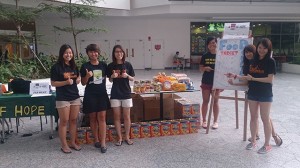 Nichol tells us that “In the USA, expired or close-to-expiry packaged goods are approved by FDA as still edible and made to good use by organisations like us. However, it is not something that importers here are aware of and culturally, we do have a public mindset that we have to overcome first.” To that end, it runs projects like Food REXYCLING Day where members of the public bring still good to eat but unwanted products and buy other grocery products at special discounted prices. It’s an exchange programme with a twist. Meanwhile, FoodLantrophy is a series of dine-outs, held quarterly where a group of people joins The Food Bank Singapore for a meal and proceeds used to purchase food items for the needy.
Nichol tells us that “In the USA, expired or close-to-expiry packaged goods are approved by FDA as still edible and made to good use by organisations like us. However, it is not something that importers here are aware of and culturally, we do have a public mindset that we have to overcome first.” To that end, it runs projects like Food REXYCLING Day where members of the public bring still good to eat but unwanted products and buy other grocery products at special discounted prices. It’s an exchange programme with a twist. Meanwhile, FoodLantrophy is a series of dine-outs, held quarterly where a group of people joins The Food Bank Singapore for a meal and proceeds used to purchase food items for the needy.
THE FOOD BANK SINGAPORE
39 Keppel Road
#01-02/04 Tanjong Pagar Distripark
Singapore 089065
www.foodbank.sg

